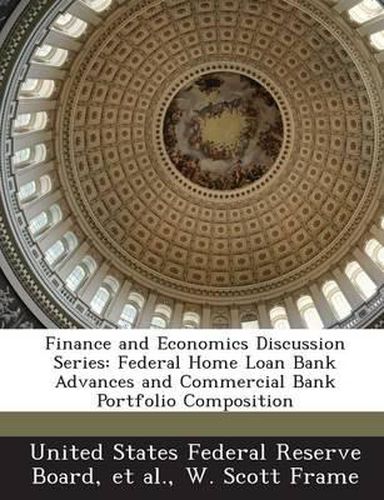Readings Newsletter
Become a Readings Member to make your shopping experience even easier.
Sign in or sign up for free!
You’re not far away from qualifying for FREE standard shipping within Australia
You’ve qualified for FREE standard shipping within Australia
The cart is loading…






The primary mission of the 12 cooperatively owned Federal Home Loan Banks (FHLBs) is to provide their members financial products and services to assist and enhance member housing finance. In this paper, we consider the role of the FHLBs’ traditional product–“advances,” or collateralized loans to members–in stabilizing commercial bank members’ residential mortgage lending activities. Our theoretical model shows that using membership criteria (such as a minimum of 10 percent of the portfolio being in mortgage-related assets) or using mortgage-related assets as collateral does not ensure that FHLB advances will be put to use for stabilizing members’ financing of housing. Indeed, our model demonstrates that advances–a relatively low cost managed liability–are most likely to influence lending only when such liabilities are used to finance “relationship” loans (i.e., loans to bank-dependent borrowers) that will be held on a bank’s balance sheet and are least likely to influence lending for loans where the loan rate is heavily influenced by securitization activities, like mortgages.
$9.00 standard shipping within Australia
FREE standard shipping within Australia for orders over $100.00
Express & International shipping calculated at checkout
The primary mission of the 12 cooperatively owned Federal Home Loan Banks (FHLBs) is to provide their members financial products and services to assist and enhance member housing finance. In this paper, we consider the role of the FHLBs’ traditional product–“advances,” or collateralized loans to members–in stabilizing commercial bank members’ residential mortgage lending activities. Our theoretical model shows that using membership criteria (such as a minimum of 10 percent of the portfolio being in mortgage-related assets) or using mortgage-related assets as collateral does not ensure that FHLB advances will be put to use for stabilizing members’ financing of housing. Indeed, our model demonstrates that advances–a relatively low cost managed liability–are most likely to influence lending only when such liabilities are used to finance “relationship” loans (i.e., loans to bank-dependent borrowers) that will be held on a bank’s balance sheet and are least likely to influence lending for loans where the loan rate is heavily influenced by securitization activities, like mortgages.